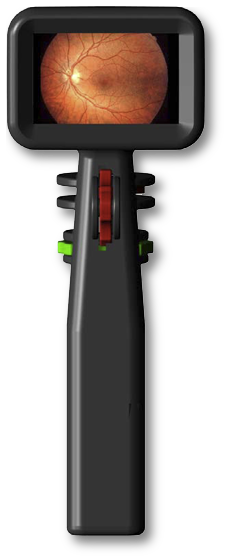Itārsi  Market
Market
Ophthalmology
exegetically Client Type
Internal project
Unmet Need
There is an unmet need for a low-cost, handheld, battery-powered, Internetenabled, non-mydriatic ophthalmic camera for screening for diabetic retinopathy and other retinal pathologies. With a sales price a fraction of that of tabletop retinal and fundus cameras, there are opportunities for a general retinal imaging device in underdeveloped counties, for a truly portable retinal camera for eye specialists within their practices, for a screening tool for primary care physicians, and for a telemedicine peripheral for visiting nurses and other practitioners (prison staff, military specialists) with a need to “bring the device to the patient”, rather than “bringing the patient to the device”.
Approach
Under funding from the National Eye Institute, a prototype camera was developed based on the optical geometry of the indirect ophthalmoscope, and leveraging the latest advances in LED illumination, CCD image sensors, battery technology, and color touch screen displays.
Product Features
This camera uses infrared illumination during image alignment and focusing to prevent pupil constriction, then white light flash for image capture. With its patented illumination system, it achieves a 40° field of view through an undilated pupil (non-mydriatic use). A high resolution touch-screen displays images and provides advanced user interface functions.
The device incorporates electronic red-filtering, and advanced image processing algorithms to enhance image quality. Images are stored on removable media. An integrated cellphone may be added to automatically upload images over existing broadband networks to an expert reading center. Images may then be read by trained retinal specialists, with diagnoses emailed to referring practitioners.
Tasks Provided by OTI
- Optical design and engineering
- Industrial design and ergonomics
- Mechanical engineering, including injection molded part design
- Electro-mechanical hardware engineering
- Software development, including a CE-based application and graphical user interface
- Prototyping, verification testing and regulatory planning